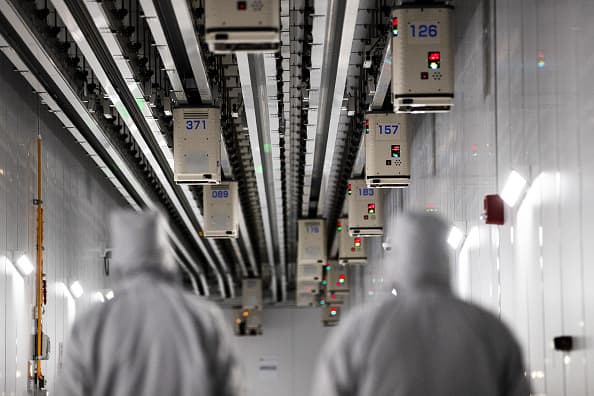Chipmakers have been clear winners in the pandemic era, and the momentum in the semiconductor space is set to remain strong going into 2022, according to a report released Monday by trade credit insurer Euler Hermes.
“The current semiconductor cycle has been firing on all cylinders since the industry emerged from its worst recession in 2019,” analysts at Euler Hermes said.
Semiconductor sales are expected to grow by another 9% and cross $600 billion for the first time in 2022, the analysts predicted. That’s on top of the 26% growth to $553 billion in 2021, they added.
A months-long semiconductor shortage during the pandemic impacted a wide-range of industries — from automobiles to gaming consoles — as chipmakers struggled to keep up with unprecedented demand as global economic activity bounced back from the Covid crisis.
While major chipmakers like TSMC have already announced plans to increase capacity, it usually takes years before these facilities come online. TSMC’s Taiwan-listed shares have already surged more than 80% in roughly two years.
Three factors have driven up sales so far, analysts from Euler Hermes said. They are:
- Demand: “Unusually strong demand” for consumer electronics, such as personal computers and smartphones
- Prices: An increase in prices due to tight supply and demand dynamics
- Improved product mix: Further improvement in product mix for semiconductors as a result of higher priced and new generation chips being introduced.
Risks for the chip sector
Looking into the new year, the analysts said those same three market drivers are expected to ease as demand growth normalizes and new production capacities come online in an accelerated fashion.
In addition, the analysts identified four risks faced by the semiconductor sector:
- Hardware sales (for products like computers and TV sets) taking a larger-than-expected hit from demand normalization after strong growth in 2020 and 2021;
- Semiconductor demand being hit by any period of prolonged freeze in manufacturing activity, as supply chain disruptions from the pandemic continue;
- A “standstill” between China and the U.S. in their battle for tech supremacy, with restrictions still in place for Chinese companies acquiring critical U.S. semiconductor manufacturing tech and equipment;
- An “increasing frequency of unusually adverse climatic events” proving to be a major challenge for the semiconductor sector, which relies on optimal capacity utilization for its profitability.
Several factors are also expected to “set the tone for 2022” in the chip sector, according to Aurelien Duthoit, sector advisor for technology and retail at Euler Hermes.
Beyond normalization of demand in areas such as computers and servers, Duthoit identified factors such as “unpredictable and random events” hurting major semiconductor manufacturing locations like Taiwan and South Korea.
Fresh developments in the technological “Cold War” between the U.S. and China could also prevent semiconductor technology specialists from selling to Chinese companies, he added.
